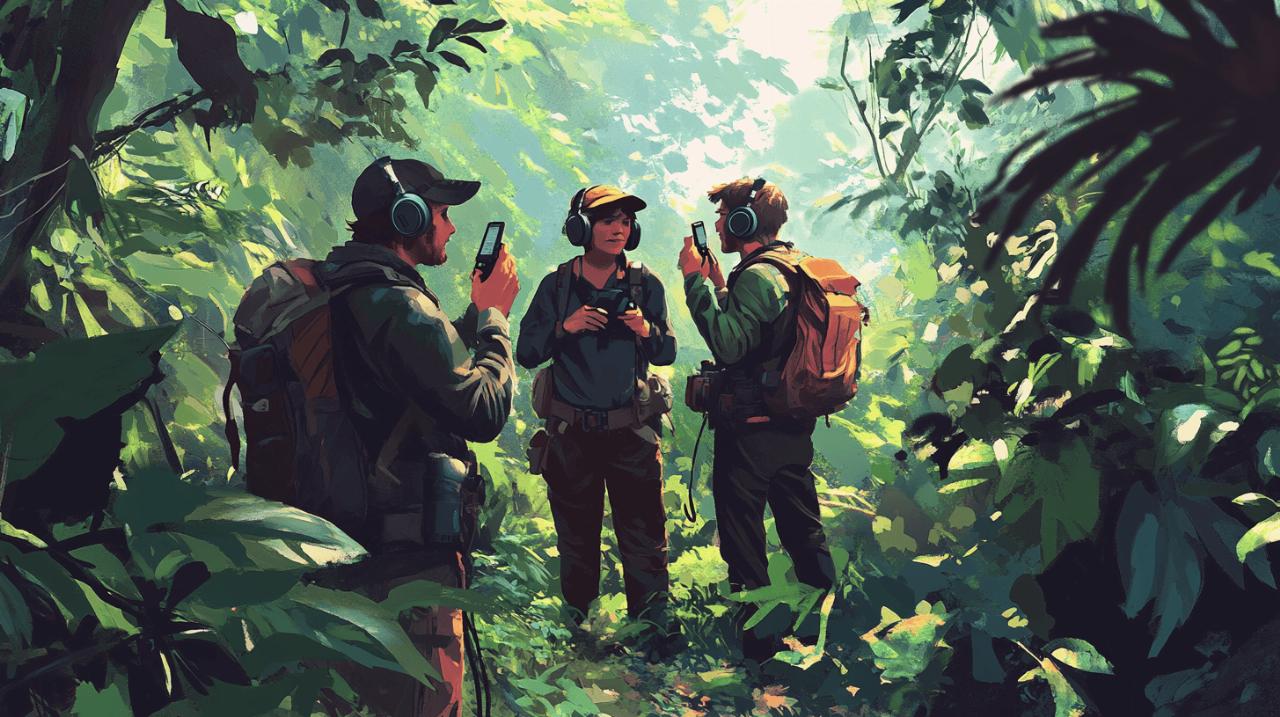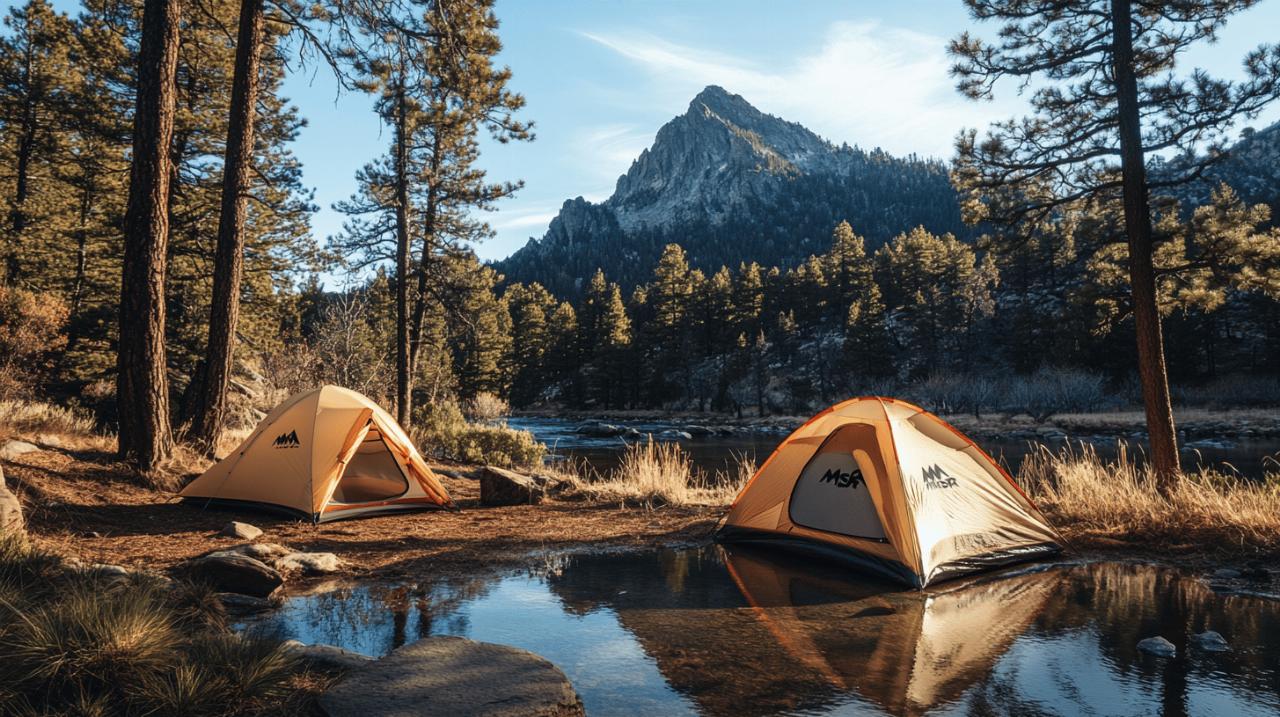For those who venture beyond the reaches of mobile networks into the untamed wilderness, maintaining contact with your group can mean the difference between a successful expedition and a potentially dangerous situation. Modern walkie-talkies have evolved into sophisticated communication tools that combine robust engineering with cutting-edge features designed specifically for outdoor enthusiasts. Whether you are navigating remote mountain trails, exploring backcountry terrain, or coordinating activities on the slopes, selecting the right two-way radio ensures you remain connected when it matters most. These devices have become an indispensable component of adventure gear, offering reliability that far surpasses the limitations of conventional mobile phones in areas where signals simply do not penetrate.
Essential features to consider when selecting outdoor walkie-talkies
When choosing a two-way radio for wilderness communication, understanding the core features that contribute to effective performance is absolutely vital. The best walkie-talkies for adventurers balance several critical attributes, each playing a role in ensuring your device functions flawlessly in challenging conditions. Range performance stands as one of the most important considerations, although advertised figures can sometimes be misleading. Real-world range depends heavily on terrain, vegetation, and atmospheric conditions. Models utilising VHF or UHF frequency can achieve impressive distances, particularly when paired with repeaters that extend transmission capabilities across valleys and over ridges.
Clarity of sound quality cannot be overlooked, as garbled or static-laden communication defeats the purpose of carrying a radio in the first place. Devices such as the BaoFeng BF-F8HP and Backcountry Access BC Link Mini are renowned for delivering exceptional audio clarity, ensuring every word comes through crisply even in windy or noisy environments. Ease of use is another paramount factor, especially when you need to operate your device with gloved hands or during stressful situations. User-friendly models like the BC Link series and Rocky Talkie radios feature intuitive controls that allow even novice users to communicate effectively without fumbling through complicated menus.
Battery Performance and Power Solutions for Extended Expeditions
Battery life is paramount when you are embarking on extended expeditions where access to charging facilities is non-existent. The Rocky Talkie 5 Watt offers impressive longevity, providing reliable performance over extended periods, whilst the BC Link 2.0 and Midland X-Talker T10 also deliver commendable battery performance. Many modern walkie-talkies now feature rechargeable battery systems with USB charging capabilities, allowing you to power your device using portable battery packs or solar chargers during multi-day treks. This flexibility eliminates the need to carry bulky spare batteries and reduces the environmental impact associated with disposable power sources.
Standby times can extend up to seventy-two hours on some premium models, such as the MagnaZon Pro-X50, which combines long-range communication with exceptional power efficiency. When evaluating battery specifications, consider both active transmission time and standby duration, as these figures directly impact how often you will need to recharge during your journey. Rechargeable systems offer convenience and sustainability, but it is always prudent to carry a backup power solution or spare battery pack to ensure uninterrupted communication throughout your adventure.
Weather Resistance and Durability for Harsh Environments
The elements can be unforgiving in the wilderness, making weather resistance and durability non-negotiable attributes for any serious outdoor walkie-talkie. Waterproof and weather-resistant designs protect your device from rain, snow, and accidental submersion, with IP67 rating becoming the gold standard for high-end models. The Rocky Talkie 5 Watt boasts IP67 certification, meaning it can withstand immersion in water up to one metre deep, whilst the Motorola T600 takes this a step further with a floating design that prevents loss if dropped into rivers or lakes during water sports activities.
Water resistance ratings vary across different models, with some offering basic splash protection and others providing comprehensive waterproof capabilities. For adventurers tackling snowy backcountry environments, devices like the BC Link 2.0 handle precipitation and cold temperatures admirably, ensuring reliable operation when conditions deteriorate. Robust construction using impact-resistant materials ensures your walkie-talkie can withstand drops, knocks, and the general rough treatment that accompanies outdoor pursuits. Investing in a durable radio means your communication lifeline remains intact even after enduring the harshest conditions nature can throw at you.
Advanced technologies enhancing modern walkie-talkie communication
Technological innovation has transformed two-way radios from simple communication devices into sophisticated tools packed with features that enhance safety and usability. Modern walkie-talkies now incorporate advanced technologies that were once the preserve of professional emergency services, making them accessible to recreational adventurers who demand the very best performance. Push-to-Talk over Cellular technology, or PoC technology, represents one such innovation, utilising LTE networks to extend communication range far beyond traditional radio limitations. Devices employing this approach can maintain contact across vast distances, making them ideal for expeditions spanning multiple terrain types and geographical regions.
Secure transmission has become increasingly important as more users share radio frequencies. AES encryption ensures your communications remain private, protecting sensitive information from interception by other radio users. This feature proves particularly valuable for commercial guiding operations or groups coordinating rescue activities where confidentiality matters. The integration of satellite communication capabilities in certain models further extends the reach of modern walkie-talkies, allowing adventurers to maintain contact even in the most remote areas where terrestrial networks simply do not exist.
Hands-Free VOX Functionality and GPS Integration for Navigation
Hands-free communication through VOX functionality has revolutionised how adventurers use walkie-talkies in the field. This voice-activated technology allows you to transmit messages without pressing buttons, keeping your hands available for climbing, skiing, or handling equipment. The Cardo Packtalk Outdoor exemplifies this technology, offering superb sound quality and hands-free operation that makes it particularly well-suited for resort skiing and riding activities. VOX sensitivity settings can typically be adjusted to suit different environmental noise levels, ensuring reliable activation without false triggers from wind or ambient sounds.
GPS integration adds another layer of functionality, enabling precise location tracking and waypoint navigation. Whilst not all walkie-talkies include dedicated GPS receivers, models with this feature allow you to share coordinates with group members, pinpoint your position during emergencies, and maintain situational awareness in unfamiliar terrain. This capability proves invaluable when visibility deteriorates or when navigating complex trail systems where traditional map and compass techniques may prove challenging. Combining two-way radio communication with GPS functionality creates a comprehensive outdoor safety tool that addresses multiple needs within a single compact device.
Emergency distress beacons and channel configuration options
Emergency features distinguish premium walkie-talkies from basic models, providing critical safety functions when situations turn serious. NOAA weather alerts offer real-time updates on approaching storms and hazardous conditions, allowing you to make informed decisions about whether to continue your journey or seek shelter. Models like the Midland GXT1000VP4 and Cobra ACXT145 incorporate dedicated weather channels that automatically alert you to severe weather warnings, giving you precious time to react appropriately.
Channel capacity and privacy codes expand communication options whilst reducing interference from other users. More channels provide greater flexibility when operating in areas with heavy radio traffic, whilst privacy codes create virtual sub-channels that filter out unwanted transmissions. This combination ensures clear, uninterrupted communication between your group members even when dozens of other parties are using the same frequency bands. Some advanced models offer programmable channels that allow you to configure specific frequencies for different purposes, though this typically requires additional technical knowledge and may necessitate obtaining appropriate licenses for certain frequency ranges.
Leading Walkie-Talkie Brands and Models for Adventurers
 The market offers an extensive range of walkie-talkies designed specifically for outdoor adventures, with certain models consistently earning recognition for exceptional performance across multiple categories. The Rocky Talkie Mountain Radio stands out as the best overall option, delivering solid range performance, impressive clarity, and excellent weather resistance in a package that balances weight and functionality beautifully. Priced accessibly, this model offers tremendous value for adventurers who demand reliability without breaking the bank. Its intuitive operation makes it suitable for both experienced radio users and those new to two-way communication.
The market offers an extensive range of walkie-talkies designed specifically for outdoor adventures, with certain models consistently earning recognition for exceptional performance across multiple categories. The Rocky Talkie Mountain Radio stands out as the best overall option, delivering solid range performance, impressive clarity, and excellent weather resistance in a package that balances weight and functionality beautifully. Priced accessibly, this model offers tremendous value for adventurers who demand reliability without breaking the bank. Its intuitive operation makes it suitable for both experienced radio users and those new to two-way communication.
For budget-conscious adventurers, the Midland X-Talker T10 represents the best bang for the buck, combining simplicity with practical features including NOAA weather channels and basic water resistance. Despite its modest price point, this lightweight radio delivers reliable performance for casual hiking and recreational outdoor activities. At the premium end of the spectrum, the Rocky Talkie 5 Watt offers exceptional durability with waterproof construction rated to one metre depth, impressive range capabilities, and extended battery life that supports multi-day expeditions. However, operation of this particular model requires appropriate licensing, making it better suited for serious enthusiasts willing to navigate regulatory requirements.
Motorola and Other Trusted Manufacturers in Outdoor Communication
Established manufacturers like Motorola have built reputations for producing reliable and durable walkie-talkies that withstand the rigours of outdoor use. The Motorola T600 exemplifies this heritage, featuring IP67 waterproof construction and a floating design that makes it ideal for water sports and activities near rivers or lakes. Its solid range performance and integrated weather alerts provide comprehensive functionality for diverse adventure scenarios. Motorola's commitment to quality engineering ensures their products deliver consistent performance year after year, making them a safe choice for adventurers who prioritise reliability above all else.
Beyond traditional manufacturers, innovative companies are pushing boundaries with specialised products designed for specific outdoor activities. Backcountry Access has earned recognition for models like the BC Link 2.0 and BC Link Mini, which offer exceptional clarity and user-friendly operation tailored specifically for backcountry excursions. The BC Link 2.0, in particular, combines fantastic range with long battery life and excellent weather resistance, making it ideal for serious wilderness adventures. Meanwhile, specialist manufacturers like OKRADI are advancing the field with satellite walkie talkies that employ PoC technology operating over LTE networks, extending communication capabilities far beyond traditional radio limitations whilst maintaining licence-free operation through secure AES encryption.
Evaluating product reviews and performance tests before purchase
Before committing to a purchase, thorough research through product reviews and independent performance tests provides invaluable insights into real-world capabilities. Comprehensive evaluations conducted by experienced outdoor communications specialists reveal how devices perform under actual field conditions rather than controlled laboratory environments. Reviews typically assess multiple criteria including range performance across varied terrain, battery longevity during extended use, water and impact resistance when subjected to harsh treatment, and overall ease of use for operators with different experience levels.
Independent testing programmes invest hundreds of hours evaluating multiple models side by side, providing comparative data that helps identify the strengths and weaknesses of each option. These assessments often reveal discrepancies between manufacturer specifications and actual performance, particularly regarding range claims which can be significantly exaggerated under ideal conditions. Seeking out reviews from verified purchasers who have used devices extensively in genuine outdoor scenarios offers practical perspectives on reliability, durability, and whether specific features prove useful or merely add unnecessary complexity. This research investment pays dividends by ensuring the walkie-talkie you select genuinely meets your communication needs rather than disappointing when you need it most.
Practical Considerations for Walkie-Talkie Usage in the Wilderness
Successfully integrating walkie-talkies into your outdoor adventures extends beyond simply selecting the right device. Understanding practical considerations regarding operation, maintenance, and regulatory compliance ensures you maximise the benefits these communication tools offer whilst avoiding potential pitfalls. Range expectations must be tempered with realistic understanding of how terrain affects signal propagation. Whilst manufacturers may advertise impressive maximum ranges extending to fifty miles or more, actual performance in mountainous or heavily forested environments typically proves more modest. Understanding how to position yourself for optimal transmission, such as seeking high ground or open areas, significantly improves communication success.
Group coordination protocols enhance communication efficiency, particularly when multiple parties share the same channels. Establishing clear communication procedures, including designated check-in times and emergency protocols, ensures everyone understands how to use the radios effectively. Privacy codes should be configured to minimise interference from other users, whilst channel selection should consider local radio traffic patterns. Regular equipment checks before departing ensure batteries are fully charged, antennas are secure, and all functions operate correctly, preventing equipment failures when you are miles from civilisation with no opportunity for repairs or replacements.
Licensing Requirements and Regulatory Compliance for Device Operation
Navigating licensing requirements represents an often-overlooked aspect of walkie-talkie ownership, yet compliance with regulations proves essential for legal operation. Many consumer-grade walkie-talkies operate on licence-free frequencies, allowing immediate use without bureaucratic hurdles or additional costs. Models from manufacturers like OKRADI specifically tout licence-free operation, making them accessible to casual users who simply want reliable communication without administrative complexity. However, more powerful devices operating on specific frequency bands, such as the Rocky Talkie 5 Watt and BaoFeng BF-F8HP, require appropriate ham radio licences before legal operation.
Obtaining the necessary licences involves completing examinations that test knowledge of radio operation principles, regulations, and technical specifications. Whilst this represents an additional investment of time and effort, the process opens access to more powerful communication tools with extended range capabilities and additional features. For adventurers who regularly venture into remote areas where communication reliability proves critical, pursuing proper licensing demonstrates commitment to responsible radio operation whilst ensuring access to the most capable devices available. Understanding which frequencies require licensing and ensuring compliance protects you from potential penalties whilst promoting responsible spectrum management that benefits all radio users.
Integrating walkie-talkies into your complete outdoor safety strategy
Walkie-talkies represent just one element within a comprehensive outdoor safety strategy that should include multiple redundant systems and essential survival equipment. Whilst reliable two-way radios provide invaluable communication capabilities, they should complement rather than replace other safety measures including detailed trip planning, appropriate navigation tools, emergency shelter, and first aid supplies. Headlamps ensure visibility during unexpected delays that extend into darkness, whilst comprehensive survival kits provide resources for addressing medical emergencies or unexpected overnight situations.
Communication devices should be protected within your rucksacks using waterproof cases or pouches that prevent damage from moisture or impact during transport. Carrying spare batteries or portable charging solutions ensures your radios remain operational throughout extended expeditions, whilst regular maintenance including cleaning contacts and checking seals preserves long-term reliability. Understanding the limitations of your equipment proves equally important as knowing its capabilities. Recognising situations where radio communication may prove impossible allows you to implement alternative strategies, such as visual signals or prearranged meeting points, ensuring group cohesion even when technology fails. By thoughtfully integrating walkie-talkies into a broader safety framework, you create multiple layers of protection that significantly enhance your ability to handle whatever challenges the wilderness presents, allowing you to explore with confidence knowing you have dependable means of maintaining contact when it matters most.






